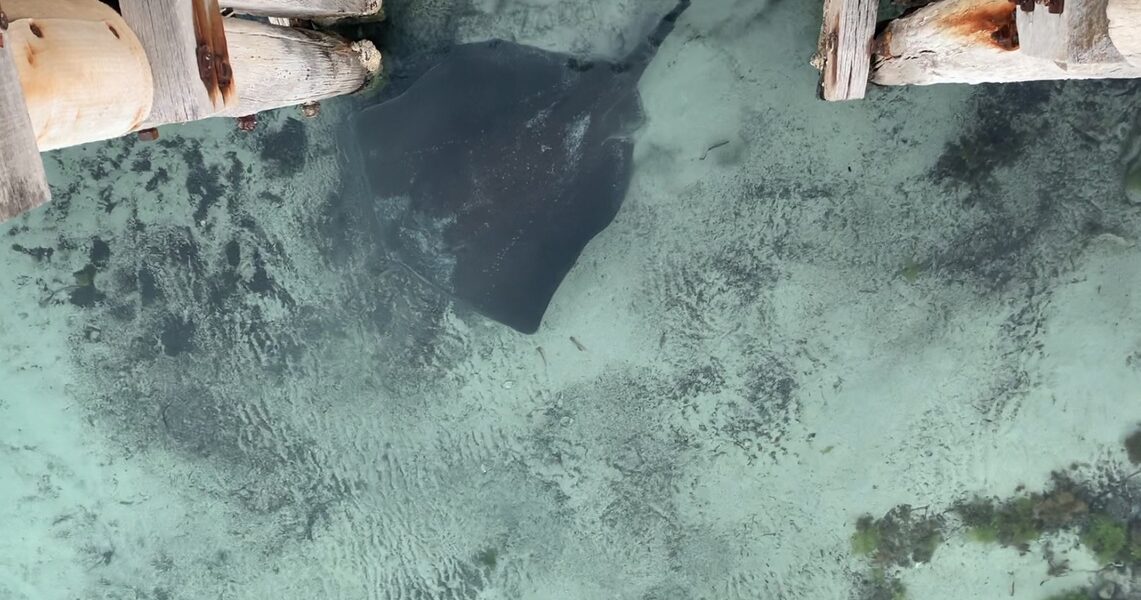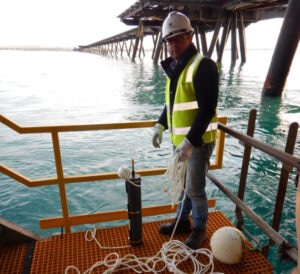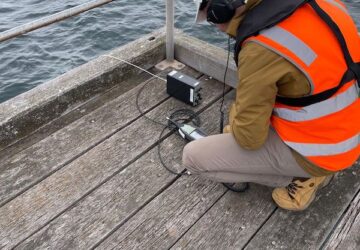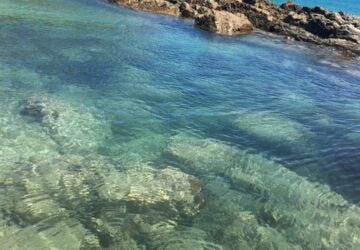
Underwater noise – helping marine life thrive
World leading changes to underwater noise guidelines
As underwater infrastructure works increase all over the world (‘Human infrastructure occupies more than 30,000 square kilometers [sic] of the sea floor’), it is more important than ever before to minimise the impact of the works on, and protect, marine biodiversity. As such, Resonate Consultants’ team in South Australia have been leading the development of guidelines related to underwater noise, specifically around piling and dredging. The South Australian Department for Infrastructure and Transport (DIT) Underwater Piling and Dredging Noise Guidelines (the Guidelines) is the only one of its kind in the country and a major update to the departments previous Underwater Piling Noise Guideline (2012).
If not managed appropriately, noise associated with marine infrastructure works such as piling and dredging may result in hearing injury or alter behaviour to marine mammals, fishes and turtles. The effects of noise pollution on marine life can include impacts upon communication, finding prey or causing avoidance of sensitive habitat areas for breeding or feeding. In severe cases, mortality may result.
Underwater noise policy and guidelines changes

Monitoring underwater noise. Acoustic consultant Darren Jurevicius.
Developed in the absence of Commonwealth guidelines, the South Australian Guidelines is the first of its kind in any Australian state or territory. Alongside the Guidelines, Resonate Consultants have produced the Marine Fauna Noise Threshold Calculator, an accompanying calculator which predicts potential hearing injury that may occur in marine mammals, fishes and turtles. The calculator is delivered in spreadsheet format and designed to function in conjunction with the Guidelines.
A senate inquiry into underwater noise impacts on mammals and other species, which began in 2019, handed down its findings in June 2020 and made a number of recommendations. Development of the Guidelines has been mindful of these recommendations.
The Guidelines provide a clear framework for the protection of underwater mammals, fishes and turtles. This work puts South Australia at the forefront of recognising and standardising the management of this issue nationally. The Guidelines follow the work of globally recognised researchers and incorporate the latest research undertaken locally and from around the world. Importantly, the updated Guidelines have been developed with input from an independent peer review process managed by Resonate Consultants.
Considering and adhering to peer reviewed research from a wide range of sources is of vital importance when working on guidelines that indirectly set the benchmark for underwater noise policy in Australia. Resonate Consultants have drawn on research and expertise from the few other similar guidelines worldwide, as well as leaning on leaders in the field to assist with the development of guidelines that reflect a growing global knowledge of the effects of underwater noise. The result is a forward-thinking policy that stands among the most relevant in this field anywhere in the world.
Darren Jurevicius, Resonate Consultants’ Managing Director, said ‘while the Guidelines have been developed for South Australia, we felt a national responsibility upon us in the knowledge that other jurisdictions may refer to the Guidelines in the absence of any other national guideline.’
The future of underwater noise policy
While the guidelines are already trailblazing, especially in Australia, they have not been designed to be the be-all-and-end-all of underwater noise policy. New research is being conducted all over the globe constantly and as new information comes to light, guidelines and policy must be refreshed to reflect it. The Guidelines therefore allow for a review process to occur at the department’s discretion, or in the very least, five years’ time.
Darren also notes ‘we always need to be continually learning. We don’t want to write policy and guidelines and set them in stone and that’s it, forever.’
A continuously updated policy has widespread benefits among the marine industry and the broader community as a whole. Improvements in the rigour applied to the assessment of underwater noise impacts on marine fauna have an immediate effect in delivering better environmental and sustainability outcomes. Our oceans and the species that live in them are already under threat from a wide range of sources and protecting them from further harm by any means necessary is crucial to the continuation of countless species of marine life.
Resonate Consultants would like to acknowledge Department for Infrastructure and Transport (DIT) for pursuing the development of underwater noise guidelines, which we believe provides a good role model for other government agencies to follow in preserving our marine environment.
Our work in developing and updating guidelines regarding underwater noise and its effects on marine fauna is leading the way within Australia. For more information on how we can help you with your policy, contact us today.




